Exploring Mechatronics Engineering at CBU: A Comprehensive Guide
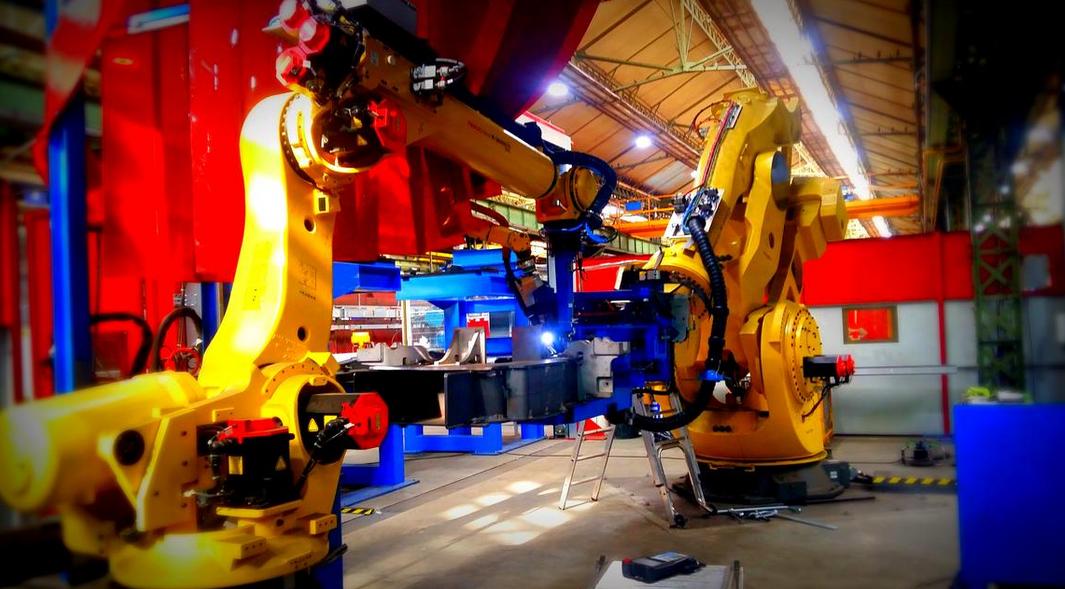
Introduction
Mechatronics engineering is an interdisciplinary field that combines mechanical engineering, electronics, computer science, and control engineering to design and create intelligent systems and products. The Copperbelt University (CBU) offers a dynamic and innovative program in mechatronics engineering that equips students with the knowledge and skills to excel in this exciting field. In this blog, we will delve into the details of mechatronics engineering at CBU, including the program structure, career prospects, and why CBU is an excellent choice for aspiring mechatronics engineers.
Mechatronics Engineering Program at CBU
The Copperbelt University offers a Bachelor of Engineering Technology in Mechatronics program that spans over four years. This program is designed to provide students with a solid foundation in both mechanical and electronic engineering, preparing them for a wide range of careers in various industries.
Key Program Features:
- Interdisciplinary Curriculum: The mechatronics engineering program at CBU combines coursework from mechanical engineering, electronics, and computer science. This interdisciplinary approach helps students develop a holistic understanding of mechatronics systems.
- Hands-On Learning: Students gain practical experience through hands-on projects, lab work, and design projects. These experiences enable them to apply theoretical knowledge to real-world problems.
- Experienced Faculty: CBU's mechatronics program is led by a team of experienced faculty members who are experts in their respective fields. They provide guidance and mentorship to students, ensuring they receive a high-quality education.
- Small Class Sizes: With small class sizes, students receive personalized attention, fostering a supportive and interactive learning environment.
- Co-op Opportunities: CBU partners with local industries to provide co-op and internship opportunities. These experiences allow students to gain valuable work experience and establish professional connections.
Academic requirements
Minimum requirements for students aiming to major in Electromechanical engineering are as follows:
- A full academic year in Bachelor of Science (non quota)
- A clear pass in first year and meeting of minimum requirements for Bachelor of Engineering (non quota).
Career Prospects in Mechatronics Engineering
Mechatronics engineering graduates are in high demand due to their unique skill set. They can work in a variety of industries, including:
- Manufacturing: Mechatronics engineers design and maintain automated production systems, improving efficiency and reducing downtime.
- Robotics: Mechatronics engineers work on the design and programming of robots used in manufacturing, healthcare, and even space exploration.
- Automotive: The automotive industry relies on mechatronics engineers for designing advanced driver-assistance systems, electric vehicles, and autonomous vehicles.
- Aerospace: Mechatronics engineers play a crucial role in developing and maintaining aircraft systems and avionics.
- Healthcare: Medical devices, such as prosthetic limbs and automated diagnostic equipment, often involve mechatronics engineering.
- Research and Development: Mechatronics engineers are in demand in research institutions and laboratories, pushing the boundaries of technology.
- Automotive: The automotive industry relies on mechatronics engineers for designing advanced driver-assistance systems, electric vehicles, and autonomous vehicles.
- Energy Industry: ZESCO, Copperbelt Energy Corporation, Energy Regulations Board and other energy providing entities are always open to hire mechatronics engineers. They have the right skills to operate under under the electrical energy generation with the help of courses such as Electrical machines and power electronics.
- Auto-mobility industry: The help of courses such as Electrical machines, electrical drives, manufacturing technology, statics and dynamics,fluid power systems and machine design enables electromechanical engineers to design and manufacture vehicles.
Why Choose CBU for Mechatronics Engineering?
- Strong Industry Connections: CBU maintains strong relationships with local industries, providing students with co-op and internship opportunities that enhance their employability.
- State-of-the-Art Facilities: CBU invests in modern laboratories and equipment, ensuring that students have access to cutting-edge technology.
- Community Engagement: CBU encourages students to get involved in community projects and competitions, further enriching their educational experience.
- Supportive Environment: The small class sizes and approachable faculty at CBU create a supportive and inclusive learning environment.
- Beautiful Location: Located in Kitwe Riverside, CBU offers students a picturesque campus with opportunities for outdoor activities and a high quality of life.
Featured Projects
The projects give you a hands on experience below are some of the projects that are done by mechatronics engineers
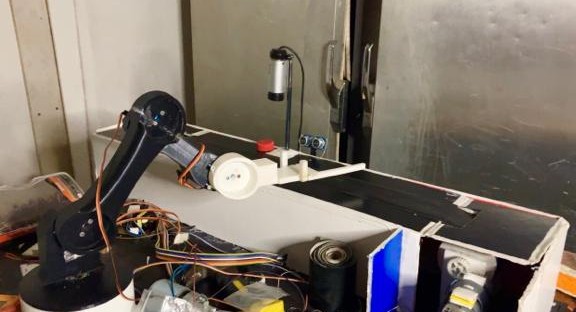
Computer Vision Based Robotic System
The Computer Vision Based Robotic System is used for sorting boxes with different colors using computer vision. Computer vision is highly being used in the industries for identifying objects and anormalises. The students applied what they learnt in class such as control systems ,embedded systems ,electronics ,mechanics of materials in arm design and material selection and simulations
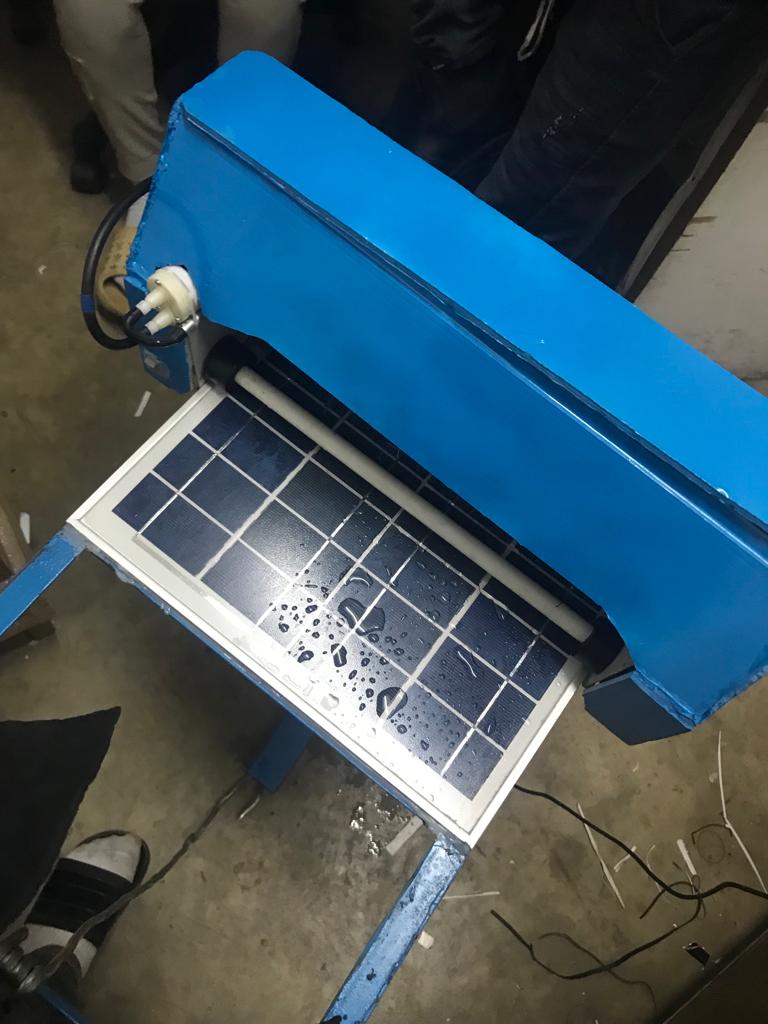
Automated Solar Cleaning Robot
Students worked on the solar cleaning robot which can be used by companies like CEC to clean there solar panels to maximise energy production.
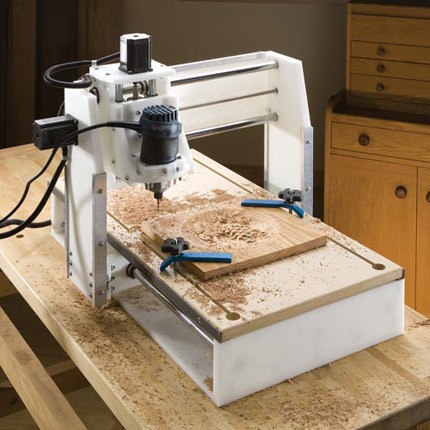
Auntomated CNC Machine
Building the CNC machine expose the students to practical side of engineering.The CNC Machine can have a laser head to cut wood and metal. The head can be replaced with a pen which can be used for drawing objects ,these machines have various applications.
Courses in Mechatronics Engineering
Students are required to undergo Bachelor of Engineering (non quota) in their second year of study
Second year course
i. Engineering Mathematics I (MA 210) - this focuses on advanced differential calculus and integral calculus..
ii. Principles of Electrical and Electronics (EE220) - Analysis of direct current circuits, single phase alternating current circuits and magnetic circuits. Additionally, the course extends to the study, analysis and design of electronic circuits.
iii. Engineering measurement systems and instrumentation (EG 232) - This is a course that introduces students to engineering measurement systems and the study of instruments used to the analysis of Electrical and mechanical systems.
v. Statics and Dynamics (EG 231) - Statics refers to the study of bodies at rest. This includes the analysis of structures such as trusses, beams etc. On the other hand, dynamics refers to the study of bodies in motion.
vi. Material science (EG 242) - This course is important for all engineering fields. It deals with the study of materials such as metals, ceramics, polymers etc. It is an essential discipline that plays a pivotal role in manufacturing engineering, construction etc.
vii. Applied computing (CS 211) - Introduction to computer programming creates a good foundation for every engineer because it enhances logical decision making. There are different programming languages adapted by engineering students.
viii. Engineering drawing (ED 240) - Principles of graphical design plays a very important role in product development. Students with good engineering design skills extend their challenges to using Computer Aided Design software such as Solidworks etc.
Third Year Courses
Applications: EE320 provides the foundation for students to design and analyze electrical and electronic circuits. The course covers a wide range of topics, including three-phase systems, network topology, computer aided analysis, filter circuits, network theorems, Laplace and impedance transforms, port parameters and coupled circuits, amplifier circuits, noise and feedback, ideal Op-Amps, practical Op-Amp circuits, signature circuits, and active filters and filter conversion.
Industries: EE320 is relevant to students in a variety of industries, including electrical engineering, electronics engineering, mechanical engineering, and computer engineering. Graduates of this course may work as electrical engineers, electronics engineers, circuit designers, system engineers, test engineers, applications engineers, sales engineers, or technical support engineers.
Applications: ET382 provides the foundation for students to understand and design systems that process signals. The course covers a wide range of topics, including signals, systems, time-domain analysis, frequency-domain analysis, convolution, linear time-invariant systems, sampled signals, linear feedback systems, and filters and equalizers.
Industries: ET382 is relevant to students in a variety of industries, including electrical engineering, computer engineering, communication engineering, control engineering, and digital signal processing. Graduates of this course may work as electrical engineers, computer engineers, communication engineers, control engineers, digital signal processing engineers, software engineers, or systems engineers.
Applications: EE 321 provides the foundation for students to design and analyze electrical machines. Electrical machines are used in a wide variety of applications, including power generation, transmission, and distribution; industrial automation; and transportation.
Topics: The course covers the following topics:
* Magnetic field energy and forces * Energy conversions in electrical machines * Singly and doubly excited systems * Interaction forces * Direct current machines * Single-phase transformers * Single-phase induction machinesLearning Objectives: Upon completion of this course, students will be able to:
* Understand the principles of magnetic field energy and forces * Explain the different types of energy conversions in electrical machines * Analyze and design singly and doubly excited systems * Apply the principles of interaction forces to solve problems involving electrical machines * Understand the construction and operation of direct current machines * Analyze and design single-phase transformers * Analyze and design single-phase induction machinesIndustries: Graduates of EE 321 may work in a variety of industries, including electrical engineering, mechanical engineering, and manufacturing. They may also work in research and development for companies that design and develop electrical machines.
Applications: Fluid dynamics and thermodynamics are fundamental principles of physics and engineering that have applications in a wide range of fields, including aerospace engineering, civil engineering, mechanical engineering, and chemical engineering. These principles are used to design and analyze systems that involve the flow and transfer of energy, such as aircraft, cars, power plants, and air conditioners.
Topics: This course covers the following topics:
* Basic fluid mechanics: fluid properties, fluid statics, fluid kinematics, and fluid dynamics * Energy equation and momentum equation * Behavior of real fluids: viscosity, compressibility, and surface tension * Basic principles of thermodynamics: work, heat, internal energy, entropy, and the first and second laws of thermodynamics * Power and refrigeration vapor cycles * Hydraulic turbines and pumpsLearning Objectives: Upon completion of this course, students will be able to:
* Apply the principles of fluid dynamics to solve problems involving the flow of fluids * Understand and apply the first and second laws of thermodynamics * Analyze and design power and refrigeration vapor cycles * Analyze and design hydraulic turbines and pumpsApplications: MC 341 provides the foundation for students to design and analyze digital systems and microprocessors. Digital systems are used in a wide variety of applications, including computers, communication systems, and control systems.
Topics: The course covers the following topics:
- Combinational logic gates
- Sequential logic gates
- Microprocessors and microcontrollers
- Programmable logic controllers (PLCs)
- Integrated circuit technologies: TTL, CMOS
- Hardware description languages (HDLs): Verilog or VHDL
Learning Objectives: Upon completion of this course, students will be able to:
- Design and analyze combinational logic circuits
- Design and analyze sequential logic circuits
- Understand the architecture and operation of microprocessors and microcontrollers
- Program PLCs using ladder logic
- Understand the principles of integrated circuit technologies
- Use HDLs to describe and design digital circuits
Industries: Graduates of MC 341 may work in a variety of industries, including electrical engineering, computer engineering, and manufacturing. They may also work in research and development for companies that design and develop digital systems.
Applications: EM330 provides the foundation for students to design and analyze engineering structures. Mechanics of materials is used in a wide variety of applications, including civil engineering, mechanical engineering, and aerospace engineering.
Topics: The course covers the following topics:
- Mechanical properties of materials
- Stress and strain
- Theory and buckling of columns
- Deflection of beams and shafts
- Transverse shear
- Stress transformation
- Strain transformation
- Torsion
- Energy methods
- Continuous beams
- Bending
- Combined loading
Learning Objectives: Upon completion of this course, students will be able to:
- Understand the mechanical properties of materials, including strength, stiffness, and ductility
- Apply the principles of stress and strain analysis to solve problems involving the design and analysis of engineering structures
- Understand the theory and buckling of columns
- Calculate the deflection of beams and shafts under different loading conditions
- Analyze the effects of transverse shear and stress transformation on the behavior of engineering structures
- Calculate the torsional stresses in shafts
- Use energy methods to solve problems involving the design and analysis of engineering structures
- Analyze the behavior of continuous beams
- Calculate the bending stresses in beams
- Analyze the effects of combined loading on the behavior of engineering structures
Industries: Graduates of EM330 may work in a variety of industries, including civil engineering, mechanical engineering, and aerospace engineering. They may also work in research and development for companies that design and develop engineering structures.
Fourth Year Courses
Applications: MC450 provides the foundation for students to design and analyze control systems. Control systems are used in a wide variety of applications, including aerospace engineering, automotive engineering, chemical engineering, electrical engineering, electronics engineering, mechanical engineering, process control, robotics, and telecommunications.
Topics: The course covers the following topics:
- Dynamic modeling of engineering systems
- Transfer functions, block diagrams, and signal flow graphs
- PID controllers
- Design of control systems
- Root locus design
- Lead and lag compensation
- Frequency response analysis and design
- Continuous state models, analysis, and synthesis
- Continuous estimators
- Transient and steady-state response of state variable representations
- Pole placement techniques
- Discrete control systems
- z-transforms, difference equations, and ZOH circuits
- Discrete root locus
- Practical considerations of discrete control systems
- A/D and D/A converters and filters
- Design exercises
Learning Objectives: Upon completion of this course, students will be able to:
- Develop dynamic models of engineering systems using transfer functions, block diagrams, and signal flow graphs
- Design PID controllers to achieve desired control system performance
- Design control systems using root locus design, lead and lag compensation, and frequency response analysis and design
- Analyze and synthesize continuous state models of control systems
- Design continuous estimators to estimate the state of a control system
- Analyze the transient and steady-state response of state variable representations of control systems
- Use pole placement techniques to design control systems with desired closed-loop poles
- Analyze and design discrete control systems using z-transforms, difference equations, and ZOH circuits
- Understand the practical considerations of discrete control systems
- Design A/D and D/A converters and filters for use in control systems
- Apply the concepts of control systems to design real-world control systems
Industries: Graduates of MC450 Control Systems may work in a variety of industries, including aerospace engineering, automotive engineering, chemical engineering, electrical engineering, electronics engineering, mechanical engineering, process control, robotics, and telecommunications. They may also work in research and development for companies that design and develop control systems.
Applications: MC401 provides the foundation for students to design and implement embedded systems. Embedded systems are computer systems that are designed to perform specific tasks, such as controlling a machine or device. They are often used in real-time applications, where the system must respond to events within a specified time frame.
Topics: The course covers the following topics:
- Computer architecture and embedded systems
- Embedded systems design methodology
- Embedded systems hardware
- Networked microcontrollers
- Specific microcontroller IC (AVR or PIC) detailed architecture
- Microcontroller architecture and assembly language programming
- Advanced applications and interfacing with microcontrollers
- Embedded systems performance
- Design of Printed Circuit Boards (PCBs) for embedded systems
- Introduction to Real –time Operating systems
Learning Objectives: Upon completion of this course, students will be able to:
- Understand the architecture and design methodology of embedded systems
- Design and implement embedded systems hardware using microcontrollers and other integrated circuits
- Develop assembly language programs for microcontrollers
- Interface embedded systems with other devices and systems
- Evaluate the performance of embedded systems
- Design printed circuit boards (PCBs) for embedded systems
- Understand the basics of real-time operating systems
Industries: Graduates of MC401 Embedded Systems may work in a variety of industries, including:
- Automotive
- Consumer electronics
- Industrial automation
- Medical devices
- Aerospace and defense
- Telecommunications
Images:
- Microcontroller: [Image of a microcontroller chip]
- Real-time operating system: [Image of a real-time operating system kernel]
Applications: EM411 Machine Design provides students with the knowledge and skills necessary to design and analyze mechanical systems. The course covers a wide range of topics, including failure prevention, analysis tools, reliability and quality control, tolerances and fits, gears, shafts, bearings, clutches, couplings, brakes, springs, bolted, riveted, and welded joints, belts and pulleys, power transmission systems, and dynamic load systems.
Topics: The course covers the following topics:
- Introduction to Machine Design
- Failure Prevention - Static Failure
- Failure Prevention - Fatigue Failures
- Introduction to Analysis Tools - Finite Element Analysis (FEA)
- Reliability and Quality Control in Design
- Tolerances and Fits
- Gears
- Shafts
- Hydrostatic Bearings
- Clutches, Couplings, and Brakes
- Springs
- Bolted, Riveted, and Welded Joints
- Belts and Pulleys
- Power Transmission Systems
- Dynamic Load Systems
- Professional Communication Techniques
Learning Objectives: Upon completion of this course, students will be able to:
- Understand the principles of machine design and analysis
- Apply failure prevention techniques to avoid static and fatigue failures
- Use finite element analysis (FEA) to simulate the behavior of mechanical systems
- Design reliable and quality control systems for mechanical systems
- Select appropriate tolerances and fits for mechanical components
- Design and analyze gears, shafts, bearings, clutches, couplings, brakes, springs, bolted, riveted, and welded joints
- Design belt and pulley systems and power transmission systems
- Analyze dynamic load systems
- Communicate effectively with engineers and other stakeholders about machine design projects
Industries: Graduates of EM411 Machine Design may work in a variety of industries, including:
- Automotive
- Aerospace and defense
- Manufacturing
- Energy
- Construction
- Mining
Applications: Electrical machines are used in a wide variety of applications, including power generation, transmission, and distribution; industrial automation; and transportation. EE 321 provides the foundation for students to design and analyze electrical machines.
Topics: * Magnetic field energy and forces * Energy conversions in electrical machines * Singly and doubly excited systems * Interaction forces * Direct current machines * Single-phase transformers * Single-phase induction machines
Learning Objectives: * Understand the principles of magnetic field energy and forces * Explain the different types of energy conversions in electrical machines * Analyze and design singly and doubly excited systems * Apply the principles of interaction forces to solve problems involving electrical machines * Understand the construction and operation of direct current machines * Analyze and design single-phase transformers * Analyze and design single-phase induction machines
Industries: Graduates of EE 321 may work in a variety of industries, including electrical engineering, mechanical engineering, and manufacturing. They may also work in research and development for companies that design and develop electrical machines.
Applications: Numerical computing and statistics are essential tools for engineers in a wide variety of fields, including manufacturing, design, and quality control. MA 411 provides students with the foundation they need to use these tools effectively.
Topics: * The role of statistics in engineering * Descriptive statistics * Probability * Discrete random variables and probability distributions * Continuous random variables and probability distributions * Joint probability distribution * Sampling distributions and point estimation of parameters * Statistical interval for a single sample * Tests of hypotheses for a single sample * Design and analysis of single-factor experiments: The analysis of variance
Learning Objectives: Upon completion of this course, students will be able to: * Understand the role of statistics in engineering * Apply descriptive statistics to data * Understand the basic concepts of probability * Describe the probability distributions of discrete and continuous random variables * Understand the concept of joint probability distribution * Calculate and interpret sampling distributions * Estimate parameters of populations using point estimation * Construct confidence intervals for population parameters * Test hypotheses about population parameters * Design and analyze single-factor experiments using the analysis of variance
Industries: Graduates of MA 411 may work in a variety of industries, including manufacturing, design, quality control, and research and development.
Applications: Signal processing is used in a wide variety of applications, including communication systems, radar, sonar, and image processing. ET 480 provides students with the foundation they need to understand and apply signal processing techniques to real-world problems.
Topics: * Introduction to signal theory * Fourier series * Modulation * Noise * Convolution * Attenuator * Equalizers * Filters * Matched filter detection * Images and the spatial frequency domain * Image coding techniques * Introduction to software defined radio * Matlab simulation for signal processing
Learning Objectives: Upon completion of this course, students will be able to: * Understand the fundamental concepts of signal processing * Apply Fourier analysis to signals and systems * Understand the different types of modulation and demodulation * Analyze and mitigate the effects of noise on signals * Perform convolution and deconvolution operations * Design and analyze attenuators and equalizers * Design and analyze filters * Implement matched filter detection * Understand the spatial frequency domain of images * Apply image coding techniques to compress and transmit images * Understand the basics of software defined radio * Use Matlab to simulate signal processing algorithms
Industries: Graduates of ET 480 may work in a variety of industries, including telecommunications, aerospace, defense, and medical imaging.
Applications: The EG 401 Group Project provides students with the opportunity to apply their engineering knowledge and skills to solve real-world problems. Students work in teams to design and develop a solution to a specific engineering problem, and they must also demonstrate their understanding of research methods.
Topics: * Design process * Project management * Research methods * Engineering problem solving * Engineering design * Engineering report writing
Learning Objectives: Upon completion of this course, students will be able to: * Apply the design process to solve engineering problems * Manage a group project effectively * Use research methods to gather and analyze data * Apply engineering knowledge and skills to solve real-world problems * Design and develop an engineering solution * Write a clear and concise engineering report
Industries: Graduates of EG 401 may work in a variety of industries, including engineering consulting, manufacturing, and research and development.
Fifth Year Courses
Applications: The MC 500 Mechatronics Design course provides students with the opportunity to apply their engineering knowledge and skills to design and develop a mechatronic system. Students work individually on a final year project, which gives them the opportunity to demonstrate their skills in project management, research, design, analysis, testing, and report writing.
Topics: * Project management * Aims and objectives * Investigation into an engineering problem or phenomenon * Research and analysis * Analysis techniques * Design techniques * Hardware production * Testing and results interpretation * Project report writing * Personal development planning
Learning Objectives: Upon completion of this course, students will be able to: * Manage a mechatronics project effectively * Formulate aims and objectives for a mechatronics project * Investigate an engineering problem or phenomenon and research relevant previous work * Use appropriate analysis techniques to solve mechatronics problems * Use appropriate design techniques to develop mechatronic solutions * Produce hardware for mechatronic systems * Test and interpret results from mechatronic systems * Write a clear and concise project report that includes conclusions and recommendations * Develop their personal skills and knowledge through personal development planning
Industries: Graduates of MC 500 may work in a variety of industries, including automotive, aerospace, robotics, and manufacturing.
Applications: The MG 531 Management Studies course provides students with a comprehensive overview of the principles of management. Students learn about leadership, entrepreneurship, strategy, personality, attitudes, work behaviors, history, globalization, values-based leadership, entrepreneurial perspectives, types of entrepreneurs, characteristics of entrepreneurs, writing business plans, government policies on small business ventures, enterprising opportunities, business motivation, competencies and skills, product concept and description, market assessment, starting new business ventures, the calculated risk, business planning and organization, developing mission, vision, and values, strategizing, strategic management in the P-O-L-C, goals and objectives, organizational structure and change, organizational culture, social networks, leading people and organizations, decision making, communication in organizations, managing groups and teams, motivating employees, the essentials of control, strategic human resource management, managerial systems, industrial and operations management, marketing, total quality management (TQM), TPM, JIT, engineering economics, and financial accounting and management.
Topics: * Principles of management * Leadership * Entrepreneurship * Strategy * Personality * Attitudes * Work behaviors * History * Globalization * Values-based leadership * Entrepreneurial perspectives * Types of entrepreneurs * Characteristics of entrepreneurs * Writing business plans * Government policies on small business ventures * Enterprising opportunities * Business motivation * Competencies and skills * Product concept and description * Market assessment * Starting new business ventures * The calculated risk * Business planning and organization * Developing mission, vision, and values * Strategizing * Strategic management in the P-O-L-C * Goals and objectives * Organizational structure and change * Organizational culture * Social networks * Leading people and organizations * Decision making * Communication in organizations * Managing groups and teams * Motivating employees * The essentials of control * Strategic human resource management * Managerial systems * Industrial and operations management * Marketing * Total quality management (TQM) * TPM * JIT * Engineering economics * Financial accounting and management
Learning Objectives: Upon completion of this course, students will be able to: * Apply the principles of management to solve real-world problems * Develop and implement effective leadership strategies * Start and manage their own businesses * Develop and implement strategic plans * Understand and manage different personality types and work behaviors * Navigate the complex global business environment * Lead and motivate teams * Make effective decisions * Communicate effectively * Manage change effectively * Develop and implement effective human resource management practices * Manage operations effectively * Develop and implement marketing strategies * Implement total quality management principles * Manage engineering projects effectively * Manage financial resources effectively
Industries: Graduates of MG 531 may work in a variety of industries, including business, finance, government, healthcare, education, and non-profit organizations.
Applications: The MC 511 Process Control and Instrumentation course provides students with the knowledge and skills necessary to design and implement control systems for industrial processes. Students learn about the measurement of physical systems, industrial transducers, the integration of programmable logic controllers (PLCs), supervisory control and data acquisition (SCADA) systems, management information systems (MIS), signal transmission and conditioning, microcontrollers, computer interfacing, real-time multitasking in computer control, reading and interpretation of PID (Process Instruments and Devices) drawings, and nonlinear and advanced control methods.
Topics: * Measurement of physical systems * Industrial transducers * Integration of programmable logic controllers (PLCs) * Supervisory control and data acquisition (SCADA) systems * Management information systems (MIS) * Signal transmission and conditioning * Microcontrollers * Computer interfacing * Real-time multitasking in computer control * Reading and interpretation of PID (Process Instruments and Devices) drawings * Nonlinear and advanced control methods
Learning Objectives: Upon completion of this course, students will be able to: * Design and implement control systems for industrial processes * Select and use appropriate transducers to measure physical quantities * Integrate PLCs, SCADA systems, and MIS systems to create a complete control solution * Transmit and condition signals in a control system * Use microcontrollers and computer interfacing to implement control algorithms * Implement real-time multitasking in computer control systems * Read and interpret PID drawings * Understand and apply nonlinear and advanced control methods
Industries: Graduates of MC 511 may work in a variety of industries, including manufacturing, process industries, energy, and transportation.
Applications: The MC 531 Computer Vision and Image Processing course provides students with the knowledge and skills necessary to develop computer vision and image processing applications. Students learn about image formation and optics, feature detection and matching, multiple views and motion, recognition, and the use of OpenCV or Python for computer vision.
Topics: * Introduction to computer vision * Image formation and optics * Feature detection and matching * Multiple views and motion * Recognition * Use of OpenCV or Python for computer vision
Learning Objectives: Upon completion of this course, students will be able to: * Understand the fundamentals of computer vision and image processing * Detect and match features in images * Track objects in multiple views * Recognize objects in images * Use OpenCV or Python to develop computer vision applications
Industries: Graduates of MC 531 may work in a variety of industries, including robotics, self-driving cars, augmented reality, and medical imaging.
Images:
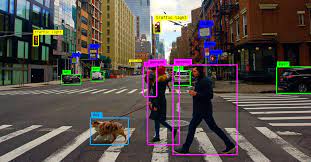
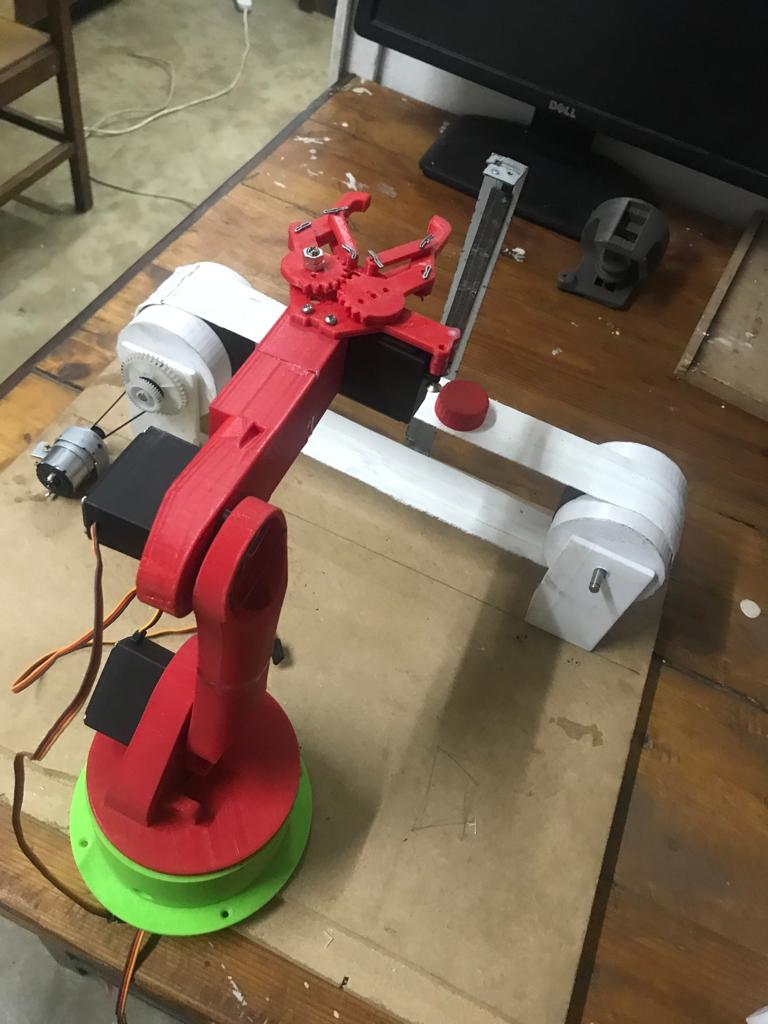
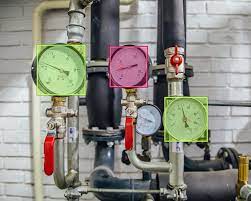

Applications: The MC 531 Wireless Sensor Networks course provides students with the knowledge and skills necessary to design and implement wireless sensor networks. Students learn about the characteristics of WSNs, medium access control protocols, routing and data gathering protocols, embedded operating systems, and applications of WSNs.
Topics: * Characteristics of WSN * Medium access control protocols * Routing and data gathering protocols * Embedded operating systems * Applications of WSN
Learning Objectives: Upon completion of this course, students will be able to: * Understand the characteristics of WSNs * Design and implement medium access control protocols for WSNs * Design and implement routing and data gathering protocols for WSNs * Select and use appropriate embedded operating systems for WSNs * Design and implement WSN applications
Industries: Graduates of MC 531 may work in a variety of industries, including environmental monitoring, industrial automation, and healthcare.
Applications: The MC 540 Fluid Power Systems course provides students with the knowledge and skills necessary to design and implement fluid power systems. Students learn about the fundamentals of fluid power, including pressure and force relationships, hydraulic fluid properties, actuators, valves, basic symbols, hydraulic pumps, accessories, speed control methods in hydraulic systems, pneumatics, electro-pneumatics, compressors, hydraulic servo mechanisms, and PLC control in fluid power systems.
Topics: * Introduction to fluid power systems * Pressure and force relationship * Hydraulic fluid properties * Actuators * Valves * Basic symbols * Hydraulic pumps * Accessories * Speed control methods in hydraulic systems * Pneumatics * Electro – pneumatics * Compressors * Hydraulic servo mechanisms * PLC control in Fluid power systems
Learning Objectives: Upon completion of this course, students will be able to: * Understand the fundamentals of fluid power systems * Design and implement hydraulic and pneumatic systems * Select and use appropriate actuators and valves * Control the speed of hydraulic actuators * Design and implement electro-pneumatic systems * Design and implement hydraulic servo mechanisms * Implement PLC control in fluid power systems
Industries: Graduates of MC 540 may work in a variety of industries, including manufacturing, construction, and transportation.
Design Exercise: Students will design and implement a simple fluid power system, such as a hydraulic cylinder or a pneumatic actuator. The design exercise will be evaluated based on the following criteria: * Correctness of the design * Efficiency of the design * Economic feasibility of the design * Completeness of the documentation
Applications: The MC 591 Robot Dynamic and Control course provides students with the knowledge and skills necessary to design and control robotic systems. Students learn about the mathematical modeling of robots, common kinematic arrangements, actuators and drives, rigid motions and homogeneous transforms, introduction to computer vision, vision-based control, independent joint control of robots, path and trajectory planning, velocity kinematics, differential motions, dynamics, force and compliance controls.
Topics: * Mathematical modeling of robots * Common kinematic arrangements * Actuators and drives * Rigid motions and homogeneous transforms * Introduction to Computer vision * Vision based control * Independent joint control of robots * Path and trajectory planning * Velocity kinematics * Differential motions * Dynamics * Force and compliance controls
Learning Objectives: Upon completion of this course, students will be able to: * Develop mathematical models of robotic systems * Design and implement common kinematic arrangements * Select and use appropriate actuators and drives * Understand rigid motions and homogeneous transforms * Implement vision-based control for robots * Implement independent joint control of robots * Plan and execute paths and trajectories for robots * Understand velocity kinematics and differential motions * Analyze the dynamics of robotic systems * Implement force and compliance controls for robots
Industries: Graduates of MC 591 may work in a variety of industries, including manufacturing, robotics, and automation.
Applications: The MC 510 Electrical Drives and Power Electronics course provides students with the knowledge and skills necessary to design and implement electrical drives. Students learn about the fundamentals of electrical drives, including DC motor drives, induction motor drives, and synchronous motor drives.
Topics: * Introduction * DC motor drives * Induction motor drives * Synchronous motor drives
Learning Objectives: Upon completion of this course, students will be able to: * Understand the fundamentals of electrical drives * Design and implement DC motor drives * Design and implement induction motor drives * Design and implement synchronous motor drives
Follow our YouTube channel to see the latest tech in Zambia!
Subscribe to our channel for videos on the latest technologies being developed and used in Zambia. We cover a wide range of topics, from artificial intelligence to renewable energy to robotics.
In Conclusion
Mechatronics engineering at The Copperbelt University offers a comprehensive education in an interdisciplinary field with immense career potential. Students can expect a well-rounded education, hands-on experience, and a supportive environment. With strong industry connections and a beautiful location, CBU is an excellent choice for aspiring mechatronics engineers looking to embark on a fulfilling and rewarding career.
